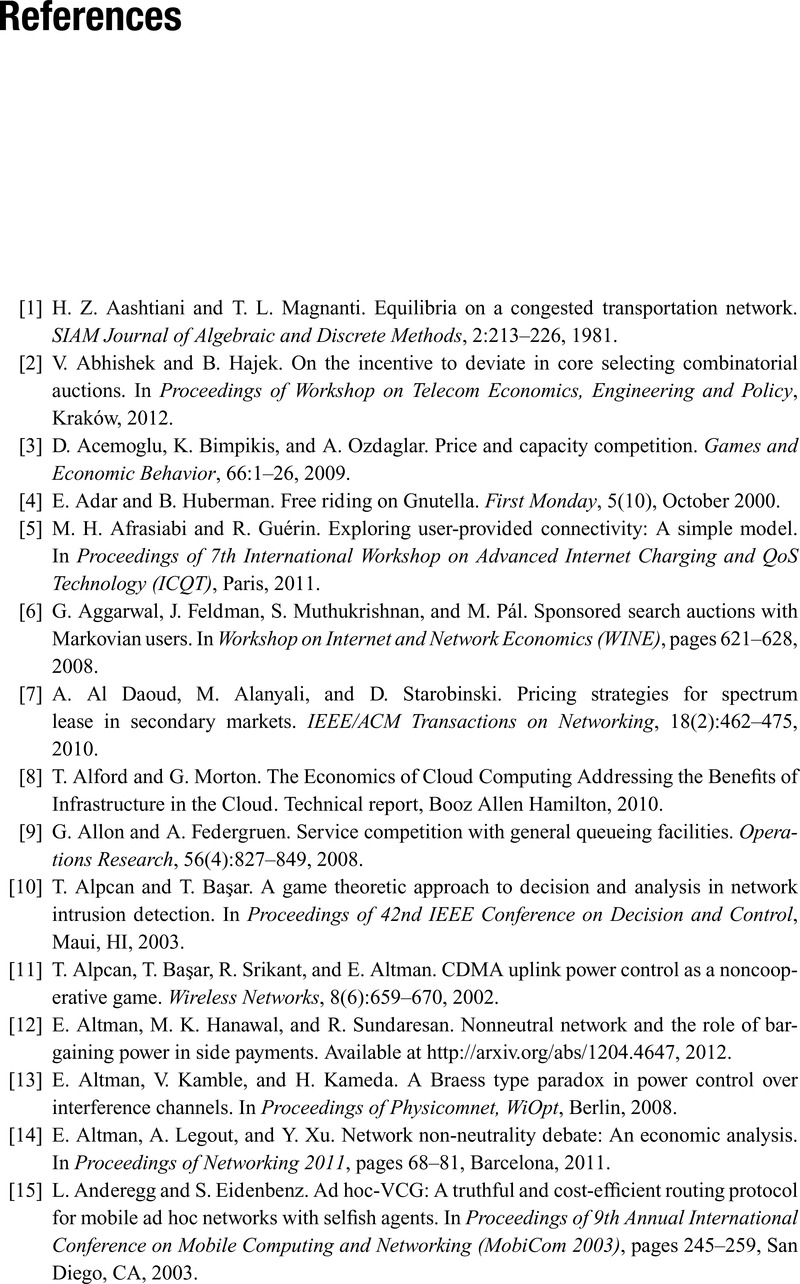Book contents
- Frontmatter
- Contents
- Preface
- 1 Introduction: telecommunications evolution and the set of actors
- 2 Mathematical foundations: optimization, game theory, auctions
- 3 Economics of access service providers
- 4 Economics at the content and application level
- 5 Interactions among network service providers
- 6 Interactions among content or application service providers
- 7 Relations between content/application providers and access service providers
- References
- Index
- References
References
Published online by Cambridge University Press: 05 April 2014
- Frontmatter
- Contents
- Preface
- 1 Introduction: telecommunications evolution and the set of actors
- 2 Mathematical foundations: optimization, game theory, auctions
- 3 Economics of access service providers
- 4 Economics at the content and application level
- 5 Interactions among network service providers
- 6 Interactions among content or application service providers
- 7 Relations between content/application providers and access service providers
- References
- Index
- References
Summary

- Type
- Chapter
- Information
- Telecommunication Network EconomicsFrom Theory to Applications, pp. 272 - 287Publisher: Cambridge University PressPrint publication year: 2014



